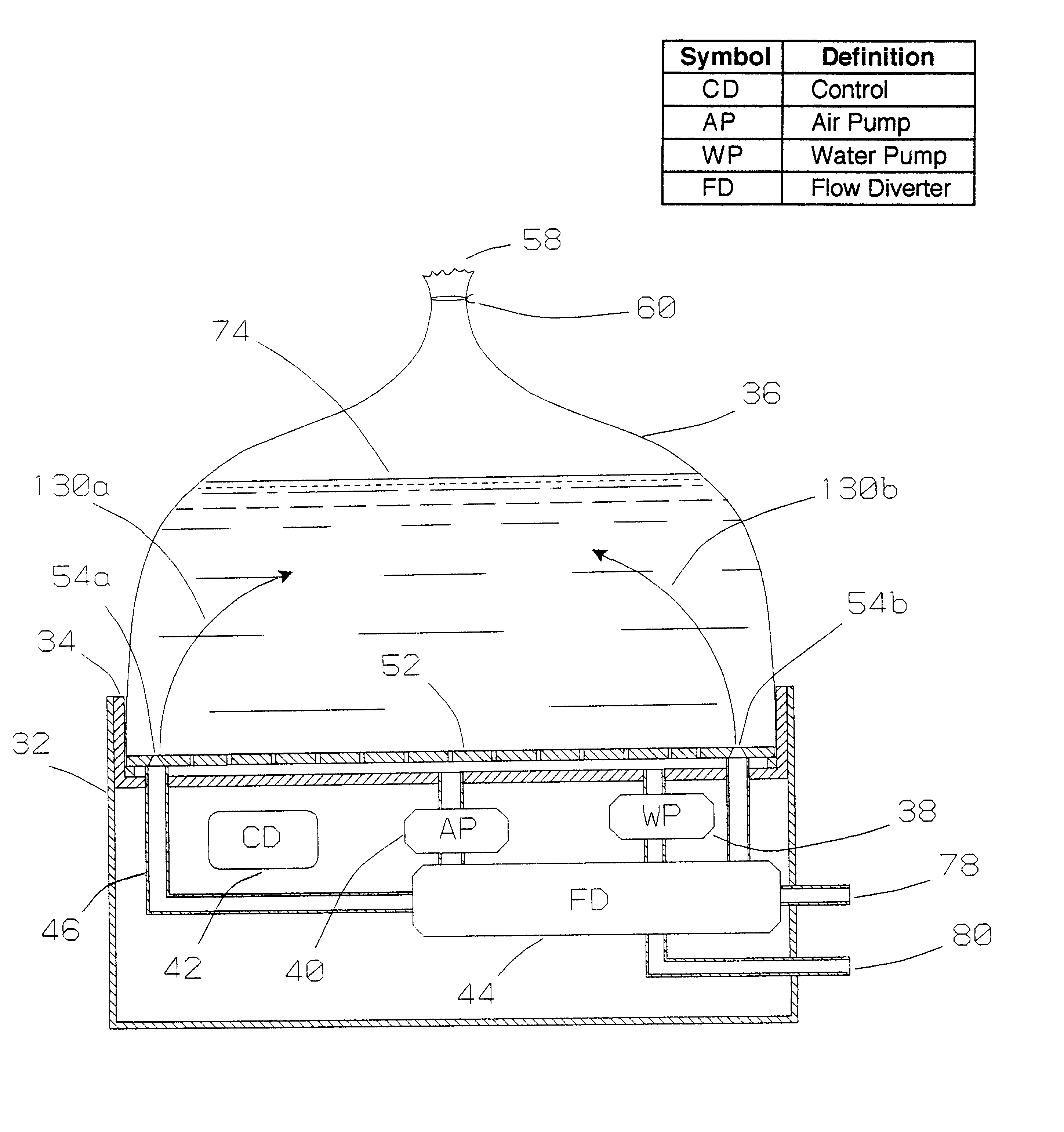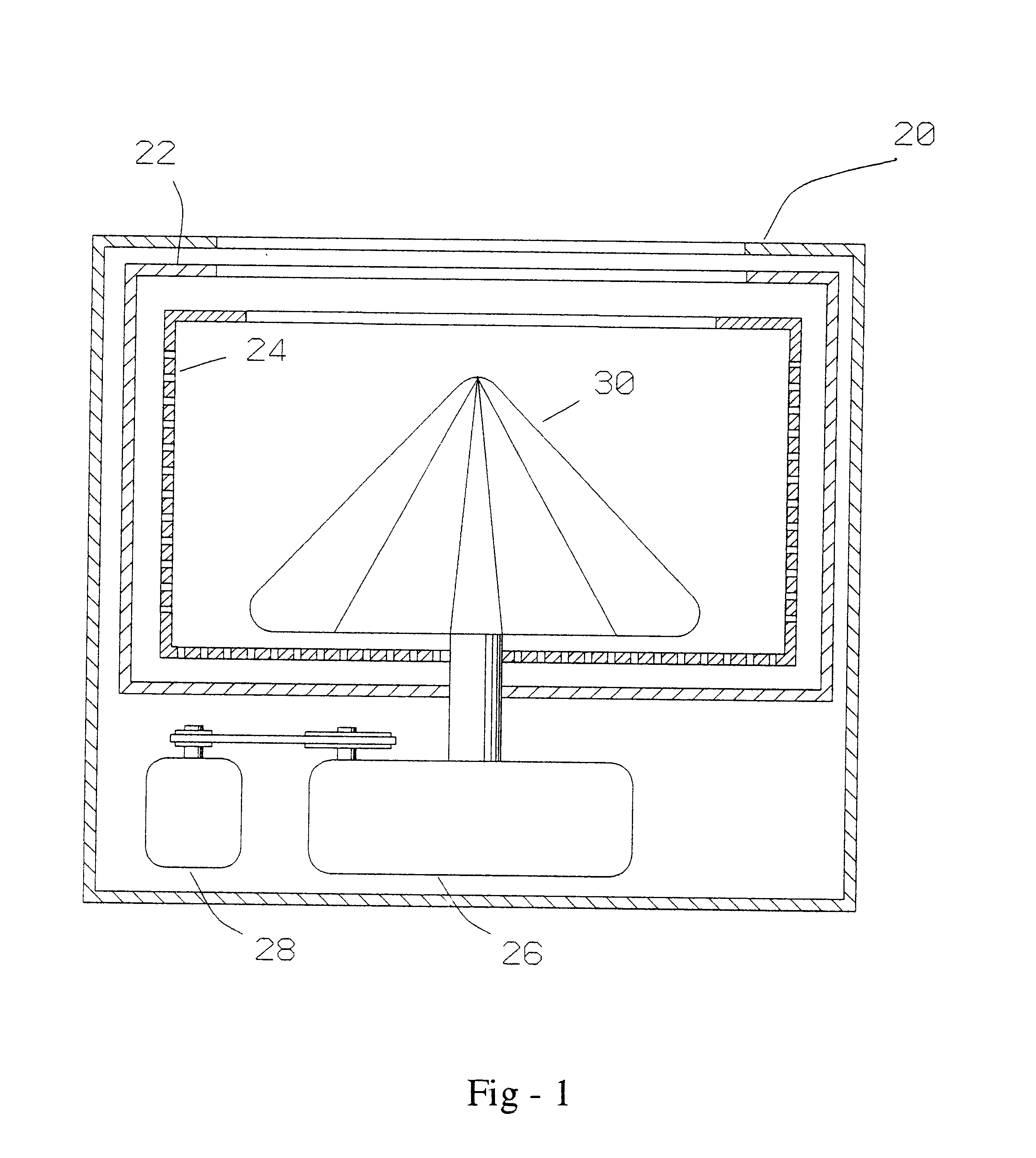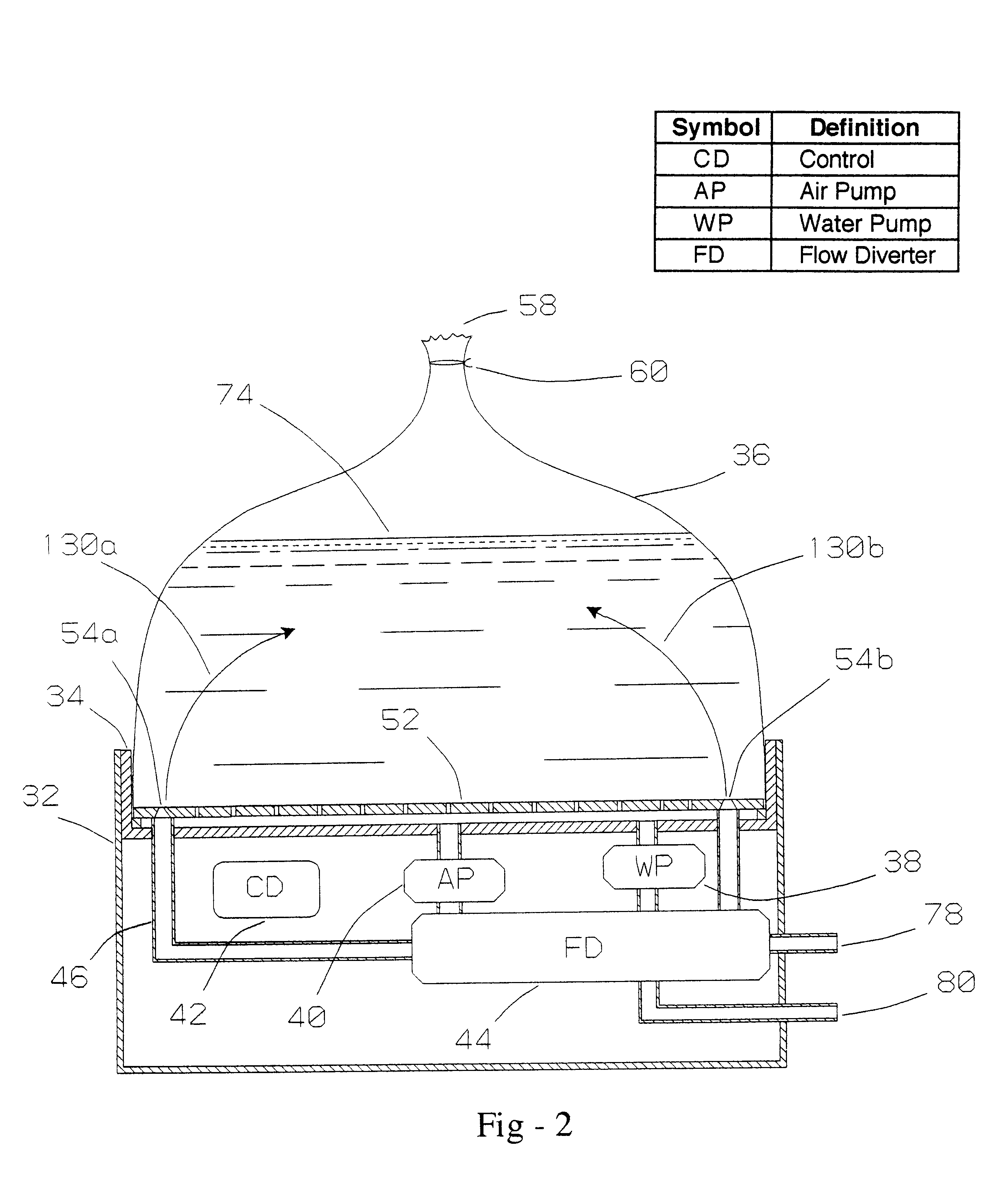Washing apparatus and method utilizing flexible container to improve cleaning efficiency and minimize space occupancy
a technology of flexible containers and washing apparatus, applied in the field of automatic washing machines, can solve the problems of not being commercially accepted, reducing capacity or increasing inconvenience, and lack of laundry facilities in living units, so as to minimize drudgery and dedication time, and the effect of sufficient capacity and convenien
- Summary
- Abstract
- Description
- Claims
- Application Information
AI Technical Summary
Benefits of technology
Problems solved by technology
Method used
Image
Examples
Embodiment Construction
As will become obvious, there are multiple preferred embodiments of the present invention. One is a stand alone unit, fully collapsible into a suitcase, another is a unit designed to be built into a wall of a house, others will be obvious adaptations to the environment where the invention will be used or stored. The same part numbers are used for the same functional part in all of the figs even though the shape may be different in different embodiments.
FIG. 1 illustrates an example of an automatic washing machine illustrating the major components necessary in an automatic washing machine design according to the prior art. The machine of the prior art comprises a rigid metal enclosure 20, a water containing tub 22, a perforated washing and spinning tub 24, a heavy transmission 26, a heavy motor 28, a bulky agitator 30, and many other smaller conventional parts such as a control panel (not shown) well known to anyone versed in the art. Motor 28 drives transmission 26 which in turn dri...
PUM
 Login to View More
Login to View More Abstract
Description
Claims
Application Information
 Login to View More
Login to View More - R&D
- Intellectual Property
- Life Sciences
- Materials
- Tech Scout
- Unparalleled Data Quality
- Higher Quality Content
- 60% Fewer Hallucinations
Browse by: Latest US Patents, China's latest patents, Technical Efficacy Thesaurus, Application Domain, Technology Topic, Popular Technical Reports.
© 2025 PatSnap. All rights reserved.Legal|Privacy policy|Modern Slavery Act Transparency Statement|Sitemap|About US| Contact US: help@patsnap.com



